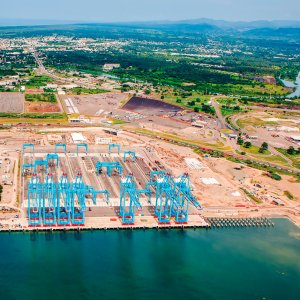Meeting Mexico's Future Oil & Gas Demand

STORY INLINE POST
Q: What type of infrastructure must be constructed to meet future natural gas needs?
A: The natural gas pipeline infrastructure is the key. LNG terminals were vital when there was less capacity for importing and distributing gas from the US to Mexico. Now, to guarantee sufficient access to US supply, there is an extensive buildout in pipelines across the border and to ensure this supply reaches the demand areas. Platts Bentek is tracking over 20 major pipeline projects here that are expected to begin service within the next five years. With an estimated combined investment of over $16 billion, these projects will fully interconnect all regions of Mexico from north to south, east to west.
In the near term, the completion of the Los Ramones pipeline will connect South Texas production and Mexico City. Los Ramones I, which was completed in December 2014, has already mostly displaced LNG imports at Altamira. When Los Ramones II is finished it is expected to reduce Mexico’s dependence on LNG imports at the Manzanillo terminal. Next year, growth in US natural gas imports is expected to shift from the northeast and central Mexico to the Permian Basin in northwest Mexico. The proposed Comanche Trail, Trans-Pecos and Roadrunner pipelines were primarily designed to serve new power demand in the Mexican states of Chihuahua, Sinaloa and Sonora. In 2018, the pipeline buildout will again shift focus back on South Texas to the northeast and central Mexico corridor. Further down the road, it will be important to develop more storage facilities since the only storage facilities are at the LNG terminals.
Q: What are the main challenges companies face when developing these projects?
A: Bureaucracy, local opposition, rules of land tenure and crime and insecurity are some of the challenges. The price of debt is significantly higher than in other countries. Companies and investors must be prepared with market intelligence to mitigate Mexico’s social and economic risks. There are several ways a research and analytics company like S&P Global can assist companies in developing exceptional infrastructure projects. We strive to provide our clients with enough information to enable them to make confident decisions.
Our division S&P Global Platts was selected by the government to provide prices to be used as benchmarks in the Energy Reform. Another unit, Platts Analytics, can provide companies with the market intelligence such as fundamental analyses and forecasts. Our consultants can help them evaluate specific projects for viability and potential returns. Platts has recently launched the Mexico Energy Monthly, a Platts Analytics report that delivers data-driven coverage of natural gas and LNG, crude oil and liquids and electric power markets. Platts Mexico Energy Monthly provides insights that allow an enhanced market outlook, the building of more robust models and validation for investment and strategic decisions.
Q: What goals must the government establish to achieve the energy industry of the future?
A: The main goal is to ensure market conditions and infrastructure development that guarantee quality energy is supplied to the residential, commercial and industrial sectors at competitive prices. It must also ensure supply of electricity throughout Mexico, expand the use of clean and renewable energy and promote energy efficiency. Mexico is creating more long-term auctions like that in which CFE awarded tenders for 5.4GW of energy. New energy plants are also being auctioned with a total 2.1GW, 1.7GW of solar and 0.4GW of wind generation, and Clean Energy Certificates (CELs), which total 1MW each, have been established. The role of natural gas will be to create balance in the market and continue to displace fuel oil from the power-generation mix. Access to cleaner and cheaper energy will increase competitiveness for Mexican industries. One example is the new Intergen power plant installed in San Luis de la Paz, Guanajuato that will receive gas from the Los Ramones pipeline, supporting industrial growth in the region.
Q: How will the shift from oil to natural gas impact Mexico’s oil and gas industry?
A: Round One created various opportunities for private companies to participate in the exploration and production activities here for the first time in 70 years. The Mexican government hopes to maintain hydrocarbon revenues as a pillar of the federal budget so the requirements for bidders in each block are high. The first two contracts were awarded in Round One. In R1-L01 and R1-L02, the government offered profit-sharing contracts, which were overly complex, and the authorities did not disclose the government minimum take until the day of the tender. In R1-L01, only two contracts were awarded out of the 14 exploration blocks tendered and in R1-L02, three shallow water production fields out of possible five were awarded.
In R1-L03, the government switched the contract structure from production sharing to licensing, which contained much more favorable terms for operators. Moreover, the minimum government take was established two weeks in advance, allowing operators to plan bids that were higher than this amount. In this phase, where 25 contracts were awarded, only six failed to sign and the government is now trying to sign with the second-highest offers.
On the demand side, Platts Analytics expects that between the end of 2015 and the end of 2021, Mexico will have retired about 4GW of fuel oil and diesel power plants as the country makes way for nearly 21GW of new gas-fired generating capacity. By 2018, CFE plans to reduce fuel oil consumption by 90 percent from the level in 2012. Fuel oil capacity that is not retiring will be retained for reliability and to meet peak summer demand. Platts Bentek expects that the phase-out of fuel oil generation from 2015 to 2021 will be equivalent to 0.5bcf/d of annual gas consumption.
Q: What is Platts’ forecast for oil and gas prices?
A: Platts Analytics expects Mexican natural gas demand to grow and that natural gas imports from the US will continue to displace LNG imports from Manzanillo and Altamira. Platts Analytics expects the US will be exporting an average of 5.3bcf/d of natural gas, which equates to about 58 percent of Mexico’s total demand. In the short term, domestic natural gas production in Mexico will continue to decline. However, this reduction in Mexican natural gas production does not represent a significant supply risk, since the plans for strategic infrastructure development will ensure there is enough capacity for US imports and these volumes will have a large impact in balancing the US market.
Platts Analytics expects Henry Hub prices to average $4.51/million BTU in 2021. On the oil side, Platts Analytics expects prices to slowly rebound over the next five years, with Maya and Brent averaging $71/b and $79/b respectively in 2021. Price rebound is projected to drive exploration and production activities for the awarded blocks in the bidding rounds, which are expected to focus on oil production over natural gas, contributing to a reversal of production trends in recent years.






















